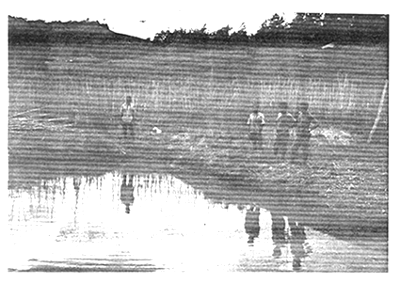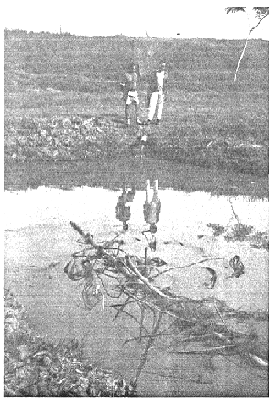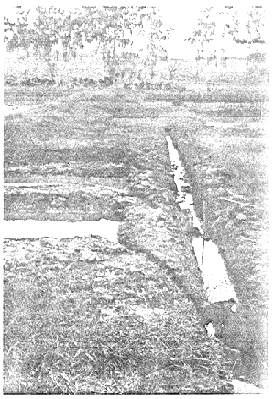Always remember that insecticides are very poisonous. They can be absorbed through the mouth and even through the skin. If anybody gets a few drops of insecticide on their skin, wash it very well with lots of water. If they get a lot on their skin or in their mouth contact a doctor immediately. Take along the container of insecticide or at least tell him the name of the insecticide and any information written on the container about treatments. If anybody feels ill after using insecticides contact a doctor immediately.
The insecticide and any implements which are used with it (gloves, boots, measuring instruments, buckets) should be kept in a locked place where there is no chance that children, animals or unauthorized people can get at them. One person should be responsible for the key. They must be stored well away from food, cooking or eating utensils, tables where food is eaten, clothing. etc. They should be stored in a place which can be washed with lots of water in case there is a spill or a container leaks, and where the water used for washing will not contaminate anybody's drinking water supply.
Never store insecticide in any other container but the one in which it is supplied. People in PNG have died because of chemicals stored in lollywater bottles.
When the insecticide in a container has been used up, wash the container very well and then cut it up with a bush-knife so that nobody will be able to use it as a water bottle. Never use the old insecticide container for anything; destroy it.
All implements which are used with insecticide (especially measuring vessels, buckets, gloves, etc.) should be used only with insectide. Mark them clearly and keep them locked away from the other tools.
When treating a pond with insecticide put on rubber gloves and boots. Take the insecticide to the pond before opening it. When you pour it into the measuring container do so in such a way that whatever spills goes into the pond water, not onto the ground and not onto the person pouring. Close the insecticide container and rinse the outside. Pour the measured quantity of insecticide directly into the pond water at a few places round the edge of the pond while standing on the bank. Rinse the measuring container and the outside of the gloves while keeping them on. Now take all the contaminated implements (insecticide container, gloves, measuring container and boots to a place where they can safely be washed in running water which is not going to contaminate anybody's drinking water supply). Wash the outside of the closed insecticide container well, then lock it away safely. Put the gloves, boots and measuring container into the running water, making sure that the water gets to all parts. Leave them to wash for several hours. Then let them dry, and lock them away.
Insecticides should only be used by somebody who has been instructed in their safe handling.
Do not handle insecticides while eating or smoking. After handling them wash well before touching food, cigarettes or betel nut.
Keep children, animals and unauthorized people away when you are working with insectides. Make sure nobody washes in recently-treated ponds.
Put a copy of these instructions in the box where implements and insecticide are stored, where they can be clearly seen.
 | Photo 1. Villagers' fish pond, Tairora |
| Photo 2. Holding pond with egg-substrates (casuarina, pine and kakabans) Aiyura | Photo 3. Newly-built experimental ponds (foreground) |
 |  |